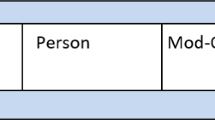Abstract
Trusted Computing is a technology proposed by the Trusted Computing Group (TCG) to solve security problems in computers. A lot of work has been conducted to support Trusted Computing for individual computers; however little has been done for distributed systems (e.g., clusters). If malicious or unqualified applications are deployed on cluster nodes, users may obtain forged results or their data may be leaked out. In this paper, a methodology of the Trusted Cluster Computing (TCC) is proposed to automatically construct user-trustable cluster computing environments. User-specified applications are downloaded from user-specified locations and automatically and dynamically deployed on cluster nodes. To reduce the dynamic-deployment overhead, a novel Heuristics-based Overhead-Reducing (HOR) replacement strategy is also proposed. A highly configurable simulator has been implemented to perform a series of simulations. The simulation results demonstrate that the HOR can produce Average Speedup with up to 14% (light workload), 10% (medium workload), 8% (heavy workload) higher than that of LRU-based strategies, with a typical setting of the Average Ratio of Deployment time to Execution time (ARDE) being 0.2.
Similar content being viewed by others
References
Pearson S (2002) Trusted computing platforms. Prentice Hall International, Englewood Cliffs
Buyya R, Abramson D, Giddy J, Stockinger H (2002) Economic models for resource management and scheduling in Grid computing. Concurr Comput-Pract Exp 14(13–15):1507–1542
Peinado M, Chen Y, England P, Manferdelli J (2004) NGSCB: a trusted open system. In: Lecture notes in computer science, vol 3108. Springer, Berlin, pp 86–97
Intel Trusted Execution Technology (2009) http://download.intel.com/technology/security/downloads/315168.pdf
OpenPBS home page (2009) http://www.openpbs.org/
Trusted Platform Module (TPM) Specifications (2009) https://www.trustedcomputinggroup.org/specs/TPM/
OMG Unified Modeling Language Specification (2009) http://www.omg.org/docs/formal/00-03-01.pdf
Trusted Computing Group (2009) https://www.trustedcomputinggroup.org/
Megiddo N, Modha DS (2004) Outperforming LRU with an adaptive replacement cache algorithm. Computer 37(4):58
Li K, Shen H (2005) Coordinated enroute multimedia object caching in transcoding proxies for tree networks. ACM Trans Multimed Comput, Commun Appl (TOMCAPP) 5(3):289–314
Jeong JH, Dubois M (2006) Cache replacement algorithms with nonuniform miss costs. IEEE Trans Comput 55(4):353–365
Wooster RP, Abrams M (1997) Proxy caching that estimates page load delays. Comput Netw ISDN Syst 29(8–13):977–986
Abrams M, S Dept of Computer, I Virginia Polytechnic, State U (1995) Caching proxies: limitations and potentials. In Proc of 4th international world wide web conference, 1995
Cao P, Irani S (1997) Cost-aware WWW proxy caching algorithms. In: Proceedings of the USENIX symposium on Internet technologies and systems, Monterey, CA. USENIX Assoc, Berkeley, pp 193–206
Li K, Shen H, Chin FYL, Zhang W (2007) Multimedia object placement for transparent data replication. IEEE Trans Parallel Distrib Syst 18(2):212–224
Zhu YW, Hu YM (2007) Exploiting client caches to build large Web caches. J Supercomput 39(2):149–175
Dahlin MD, Wang RY, Anderson TE, Patterson DA (1994) Cooperative caching: using remote client memory to improve file system performance. In: Proc of first symposium on operating systems design and implementation, pp 267–280
Tewari S, Kleinrock L (2006) Proportional replication in peer-to-peer networks. In: Proceedings of 25th IEEE international conference on computer communications (INFOCOM), pp 1–12
Cohen E, Shenker S (2002) Replication strategies in unstructured peer-to-peer networks. In: Proceedings of ACM SIGCOMM’02, 2002
Li K, Shen H, Chin FYL, Zheng SQ (2005) Optimal methods for coordinated enroute Web caching for tree networks. ACM Trans Internet Technol (TOIT) 5(3):480–507
Author information
Authors and Affiliations
Corresponding author
Rights and permissions
About this article
Cite this article
Wu, Y., Gang, C., Liu, J. et al. Automatically constructing trusted cluster computing environment. J Supercomput 55, 51–68 (2011). https://doi.org/10.1007/s11227-009-0315-4
Received:
Accepted:
Published:
Issue Date:
DOI: https://doi.org/10.1007/s11227-009-0315-4




